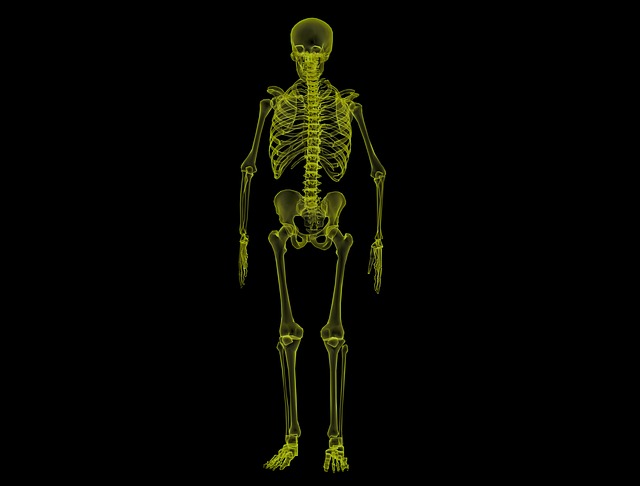Blog
The Vital Element of Spinal Longevity is Your Core
Core mechanics contribute to a healthy spine
But surprisingly few people are able to take advantage of their core when it comes to supporting the lower back. Think about your core and what it means to you: is it just an ambiguous mass of muscle in the middle of your body; or is it a dynamic set of muscle groups that work together to stabilize the lower back, sharing the burden of weight and preventing injury to vertebrae and muscles in the lumbar region? At Holmes Chiropractic, we hope it is the latter; and if not, we can help you turn your core into a lower back stabilizing aid that will benefit you throughout your lifetime.
Facts In Hand: Making an Informed Choice on Back Care
Back pain is the leading cause of disability in the world
Even doubters of this grandiose statement have to admit that the phenomenon of back pain has established itself firmly in society. Its presence is on the rise, with conservative estimates stating that as much as 80% of our country’s population will experience back pain in some form during their lifetime. And while there are many direct, or acute, causes for back pain, there are equally as many cases of indiscriminate lower back pain that is aggravated by lifestyle factors. As we discussed in our blog here, pain is one of the least understood phenomena in society, which makes the need for unique, customized treatment all the more important.
Radiculopathy: Spinal Nerves Under Pressure
Radiculopathy is irritating
At its most basic, radiculopathy is a condition characterized by compression and/or irritation of a spinal nerve as it exits the spinal cord. Symptoms include:
- Pain
- Feelings of numbness and tingling
- Weakness in the extremities
Most commonly occurring in the lumbar and cervical segments of the spine, radiculopathy often results from activities or habits that place an excessive amount of pressure on the spine. In this way, people who work physically labor-intensive jobs are the most at risk for radiculopathy. At the same time, radiculopathy can also occur in those who lead a more sedentary lifestyle, especially those work office jobs without consistently good posture.
Why Musculoskeletal Medicine Matters
Musculoskeletal medicine matters for quality of life
Understanding the complexities of the musculoskeletal human means coming to better terms with what causes pain, especially chronically recurring pain that can become life-defining. Chiropractic, in its own way, is a form of pain science that seeks to treat the underlying causes of pain rather than repress or placate the symptoms.
Careers with Back Pain: White Collar Work
White collar work hurts
White collar work doesn’t involve the dangers of lifting that more physically demanding jobs do, but it still takes a toll on the body. And precisely where does it hurt? The lower back. Because the average office worker can spend more than seven hours a day sitting while on the job, white collar work is one of the worst professions for back pain.
Careers with Back Pain: Auto Mechanics
Don’t let your job kill your back
Automobile mechanics are in an industry that can be disastrous for the back. Consistently ranked in the top 10 of professions that cause back pain, the auto mechanic faces unique challenges to maintaining their spines’ integrity. Cars are large, awkward objects that require a human to bend, dip and arch their backs in order to get the required angle for work on the car. As we have found out, bending is one of the hardest movements on the spine because it pinches the front of intervertebral discs and leads to degenerative problems in the spine. Below you will find health tips regarding back care and the auto mechanic industry.
Careers with Back Pain: Nursing
Each job comes with its own set of occupational hazards for the spine
Which means that it is important to identify those risks that are particular to your job. And while it may seem apparent that construction workers face a higher incidence rate of injury to their back, you may be surprised to find that nurses suffer more pain as a result of their job. What is responsible for this? It turns out that the lifting involved in nursing is a critical factor in creating back pain. Helping patients move from lying to sitting, boosting them from gurney to examination table and preventing patients from falling are all movements that can damage ligaments and create dysfunction in the spinal motion segments. Here are our tips for preventing back pain as a nurse.
Getting to Know Your Spine In-Depth: Spinal Motion Segments
The Spinal Motion Segment
There are thirty-three vertebrae that make up the human spine. Between each one is a spinal motion segment, also known as a functional spinal unit. Spinal motion segments are made up of:
- Two vertebrae
- Intervertebral disc
- Two facet joints
- A host of supportive ligaments and other soft tissue
The first three in the bulleted list make up what is known as the articular triad, because they allow for the minute articulation between vertebrae. The main role of the spinal motion segment is to allow for motion of the upper body while maintaining enough structural integrity to stabilize the spine and prevent injury to spinal nerves that exit at each level of the spine.
Chiropractic is a Lifestyle not a Treatment
Chiropractic is part of a lifestyle that contributes to overall wellness
At Holmes Chiropractic, our most important goal is to help people live a healthy and vital life. We have identified a host of elements that make up this particular kind of life:
- Regularly energized
- Active living is your norm
- Good diet choices are standard
- Minimal use of medication
- Active living
And chiropractic adds a sixth tenet to this list: spinal adjustment. Because our bodies are designed as the true healers of disease, our job is simply to make them more adept at the healing.
Aligning your body with your lifestyle
B.J. Palmer, a pioneer in chiropractic medicine said: “While other professionals are concerned with changing the environment to suit the weakened body, chiropractic is concerned with strengthening the body to suit the environment.” This is a guiding principle of our philosophy at Holmes Chiropractic: we want to empower your body to make maintaining a high level of health easy! Using chiropractic, you will spend less on pharmaceutical costs, require fewer surgeries and spend less of your life in the hospital. If this appeals to you, then give our office in Houston a call to schedule an appointment today.
Spinal Elongation: The Therapeutic Feeling of Decompression
Shedding some light on the positions that put your spine under more pressure
The following three conditions are examples of spinal positions put the spine under more pressure than normal, leading to the onset (in some cases far too early onset) of spinal degeneration.
- Forward-head posture: this position puts the head anywhere between 1-3 inches forward of a balanced position atop the spine.
- Hyperlordosis: inward curvature of the lower back
- Scoliosis: sideways curvature of the spine that most often occurs in puberty
These positions also cause the narrowing of spinal discs and if left alone for long enough the curvatures can become even more exaggerated. Because these three positions cause increase compression of the spine, our goal is to reverse the ill-effects of this compression. One of the best ways to do this is through spinal elongation.









